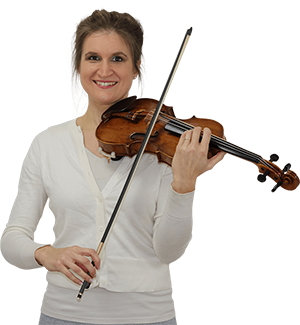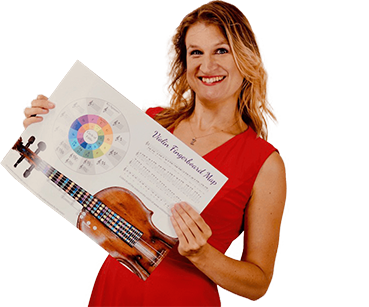6 Hacks to Practice Scales and Improve your Intonation
Practicing scales on the violin… you’ve probably heard you must, it’s useful and helps you play in tune. So you have a scale book… now what?
Scales can be a laboratory where you can develop your violin technique
Music is made out of scales in a way. In a sort of ‘neutral’ environment, you can practice your intonation and bow technique.
Which violin scale book is best for you?
In this article I discuss the best scale books depending on your level.
Why is it important to practice scales?
Heiftez considered scales the way a violinist can really show his bare technique. Let’s see what he has to say when he tests Perlman’s skills:
How to practice scales on the violin?
#1 Have a clear goal in mind
Be crystal clear why you practice the scales in that particular way. What do you want to improve? Be as specific as possible!
Do you want to improve your intonation in a certain key? Do you want to improve your left hand right hand coordination? Do you want to improve your bowing technique, if yes, which one?
Lots of people just practice scales, because their teacher tells them or because they’ve heard that’s what you should do if you play the violin.
Think about which scale you practice, how and why… That helps you get better results and stay motivated.
#2 Match your scale practice to your etudes and pieces
Your ultimate end goal is to play the music you love beautifully, isn’t it?
Scales can help!
Learning to play well in the key of the piece you want to play and practicing the bowing techniques you encounter there, will get you faster progress on your repertoire.
#3 Choose the right key
As I describe in my article about scale books, they are built up per key or per type of scale.
You can play all scales, arpeggios and double stop in a key per day or you can play a different bowing technique, tempo or number of octaves in all scales.
If this is a little too much, look at the keys you need for the music you’re playing right now.

Hi! I'm Zlata
Classical violinist helping you overcome technical struggles and play with feeling by improving your bow technique.
#4 Choose the number of octaves and the type of scale
When you know what key to practice, it’s time to choose the type of scale.
In scale books you’ll find one octave scales on one string, 1 to 4 octaves, arpeggios, thirds, chromatic scales, double stops and even harmonics.
Your choice depends on the technique you want to improve on in general and the etude or piece you are playing.
# 5 Challenge yourself in bowing
You might know by now that I’m all about bowing technique 🙂. You don’t only play your scales to improve your left hand technique, but you can play around with different bowing techniques in the scales you practice.
Scale books generally have lots of bowing variations and of course you can make up your own or take them from the etude or piece you’re playing.
# 6 Choose a good tempo for your scale practice
You might want to ‘get it over with’ and rush through your scales. It makes so much more sense to practice slowly. You don’t improve anything if you play them just to play them.
Go for quality, not quantity. That you didn’t do many exercises and variations in an hour, is actually in a good sign!
Practice doesn’t make perfect all the time… it just makes permanent. Practicing scales with sloppy intonation and thinking you’ll correct that ‘later’ will only make your playing worse.
Variate with rhythms. Just as with bowing technique, you can very in which rhythm you play your scale.
How do you practice your scales?
Let me know your scale routine in the comments below and if they’ll change after reading this article.


I love practicing scales, I don’t know what people have against them lol
Good for you!